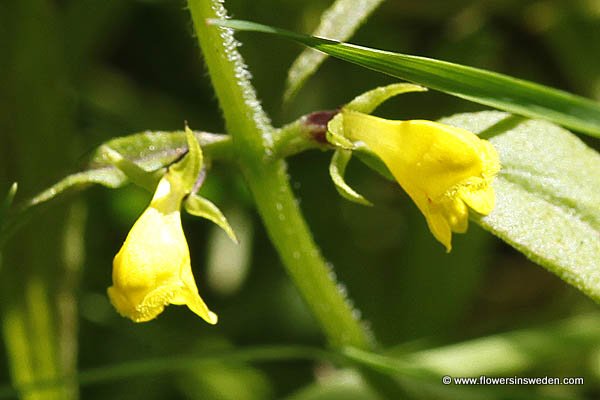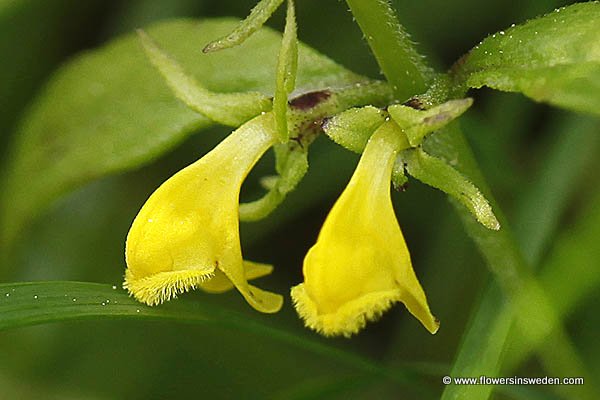|
|
| Life form: |
| Annual |
| Stems: |
| Stems erect, simple or branched and up to 40 cm; branches ascending, in opposite pairs; base of both stem and branches softly hairy and tinged red-brown in
larger plants. Hairs occur in two opposite rows on stem or branches in the plane perpendicular to branch of leaf emergence. |
| Leaves: |
| Opposite, narrow leaves |
| Flowers: |
| Opposite, deep yellow tubular flowers; after fertilization the petals often turn a distinctive bright brick-red or orange colour as they fade |
| Flowering Period: |
| June, July, August |
| Fruits: |
| Capsule narrowly ovoid, acuminate, dehiscing
dorsally (1–) 2–4 seeds. Seeds ovoid, yellow brown, with pale elaiosome becoming black after dehiscence. |
| Habitat: |
| Humid parts of open woodlands |

Derivation of the botanical name:
Melampyrum, from the Greek melas, "black" and pyros, "wheat", because the seeds made bread black when mixed with them.
sylvaticum from the Latin Sylva, "forest", and aimed at the plant site.
- The standard author abbreviation L. is used to indicate Carl Linnaeus (1707 – 1778), a Swedish botanist, physician, and zoologist, the father of modern taxonomy.
Melampyrum sylvaticum is insect-pollinated. Ants have been reported to be the main dispersal
agents and the seed bears an elaiosome which offers them a lipid-rich reward.

|



